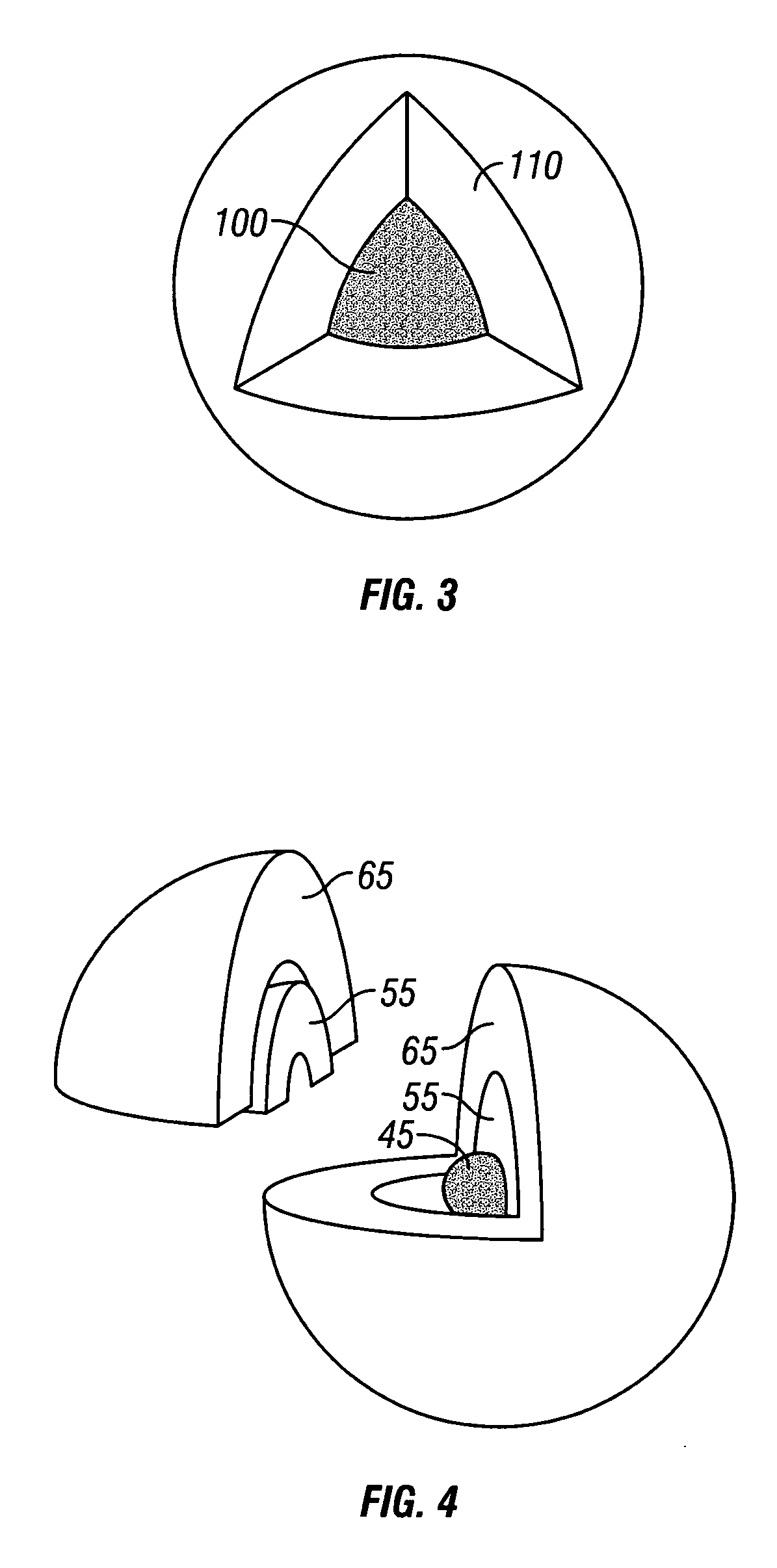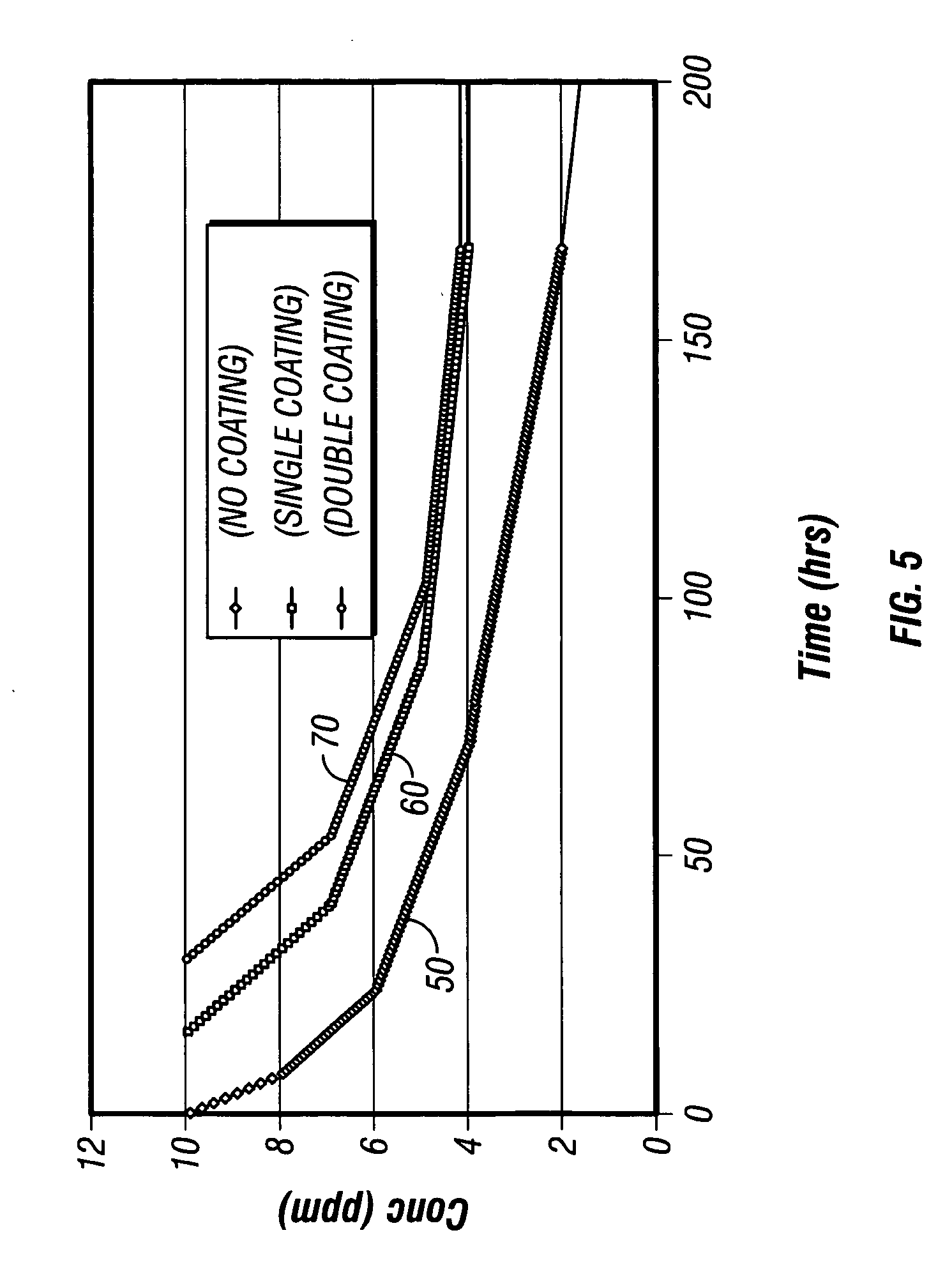Time release multisource marker and method of deployment
a multi-source marker and time-release technology, applied in the direction of drilling compositions, chemistry apparatus and processes, constructions, etc., can solve the problems of prohibitively high cost of determining zonal contribution, high cost of production logging tools, and risk of loss of production, so as to delay the release of markers
- Summary
- Abstract
- Description
- Claims
- Application Information
AI Technical Summary
Benefits of technology
Problems solved by technology
Method used
Image
Examples
example 1
[0044] 200 mg dry, solid particles of 2,4,5 trifluorobenzoic acid or flourobenzoate salt are sorted for particle size by mesh screens of sizes 20 to 40. These particles are fluidized in a UniGlatt fluidized bed apparatus using a Wurster column. These particles are then sprayed with a liquid cellulose acetate consisting of about 40% percent solids. A spray nozzle with level setting and air pressure of 2.7 bars combined with an exhaust filter bumping scheme of 10 seconds duration with a 2 minute interval is employed in the coating operation. The inlet temperature is 50 degrees Celsius and the feed rate about 15 milliliters (ml) per minute. The spray time is about 30 minutes. The capsules have a coating thickness which varies from 5 to 65 microns and an average coating thickness of 40 microns.
example 2
[0045] A 5% solution of 2,4,5 triflourobenzoic acid in distilled water is prepared at room temperature. The 5% 2,4,5 triflourobenzoic acid or flourobenzoate salt solution is then added to ceramic beads having a mesh size of 20 / 40 to create a slurry. In this example, the batch size is 10 kg.
[0046] The slurry is stirred for 15 minutes using a paddle stirrer to saturate the ceramic beads with the 2,4,5 triflourobenzoic acid or flourobenzoate salt. The stirred slurry is dried in a convection oven at approximately 38° C. for 30 minutes until the slurry contains about 0.25% moisture. The marker concentration is increased from 5% to 10% by successive addition of the 5% marker solution to the dried slurry. Once the 5% marker solution has been added to the dried slurry, the slurry is again heated to obtain between about 0.1%-8% moisture.
[0047] The coatings are prepared by first combining an epoxy resin and catalyst according to the manufacturer's specifications. The catalyzed epoxy is adde...
example 3
[0049] A 5% solution of 2,4,5 triflourobenzoic acid in distilled water is prepared at room temperature. The 5% 2,4,5 triflourobenzoic acid or flourobenzoate salt solution is then added to ceramic beads having a mesh size of 20 / 40 to create a slurry. In this example, the batch size is 10 kg.
[0050] The slurry is stirred for 15 minutes using a paddle stirrer to saturate the ceramic beads with the 2,4,5 triflourobenzoic acid or flourobenzoate salt. The stirred slurry is dried in a convection oven at approximately 38° C. for 30 minutes until the slurry contains about 0.25% moisture. The marker concentration is increased from 5% to 10% by successive addition of the 5% marker solution to the dried slurry. Once the 5% marker solution has been added to the dried slurry, the slurry is again heated to obtain between about 0.1%-8% moisture.
[0051] An epoxy coating and hardener are combined and mixed and added to the dried slurry. The catalyzed epoxy is added to the saturated proppant at a rati...
PUM
| Property | Measurement | Unit |
|---|---|---|
| thickness | aaaaa | aaaaa |
| time delay | aaaaa | aaaaa |
| time delay | aaaaa | aaaaa |
Abstract
Description
Claims
Application Information
 Login to View More
Login to View More - R&D
- Intellectual Property
- Life Sciences
- Materials
- Tech Scout
- Unparalleled Data Quality
- Higher Quality Content
- 60% Fewer Hallucinations
Browse by: Latest US Patents, China's latest patents, Technical Efficacy Thesaurus, Application Domain, Technology Topic, Popular Technical Reports.
© 2025 PatSnap. All rights reserved.Legal|Privacy policy|Modern Slavery Act Transparency Statement|Sitemap|About US| Contact US: help@patsnap.com



